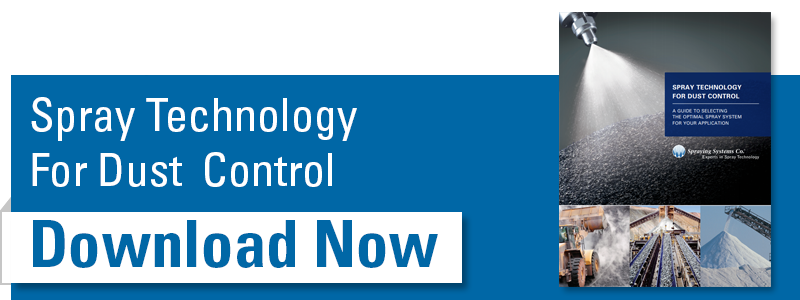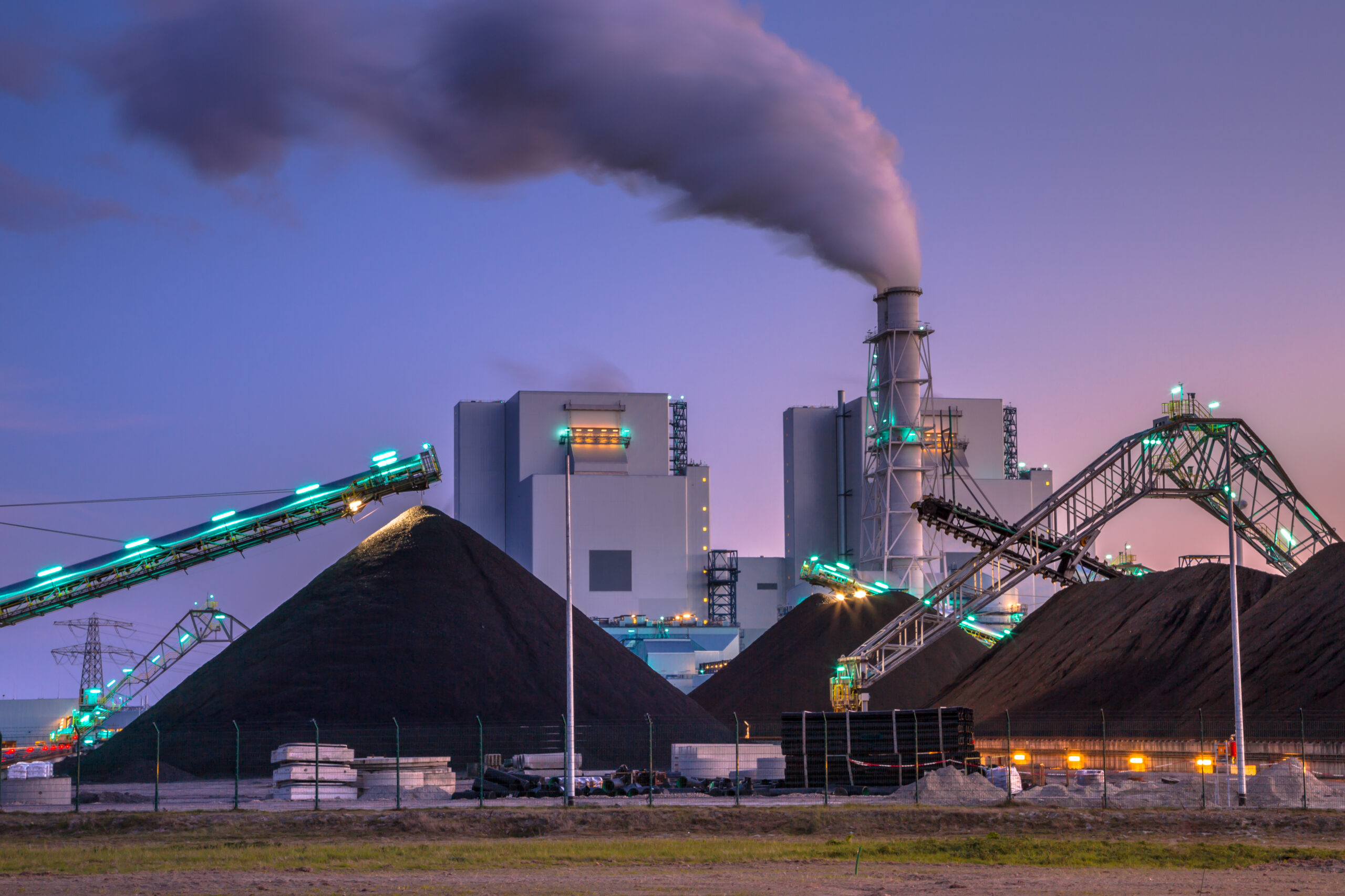Climate protection is not only a local, but a global challenge, especially when it comes to air quality control. Around the world new technical solutions must be applied to accomplish compliance with environmental safety standards. In this mini-series we focus on two different cases of air quality control measures in combustion processes – dust suppression in Sebalang (Indonesia) and DeNOx in Pisa (Italy).
Fine dust control at a coal plant
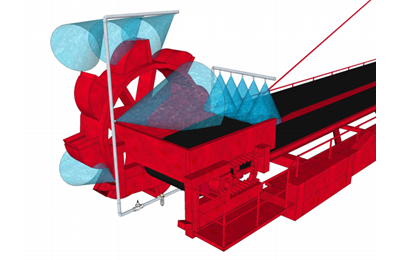 Currently, Indonesia gains more than 50% of its electrical energy from coal combustion (source). An important contributor to the energy that’s being produced is the coal-fired power plant Sebalang that was built in 2008 and comprises two blocks of 50 MW electrical power each.
Currently, Indonesia gains more than 50% of its electrical energy from coal combustion (source). An important contributor to the energy that’s being produced is the coal-fired power plant Sebalang that was built in 2008 and comprises two blocks of 50 MW electrical power each.
During the pre-treatment of coal for combustion, diffuse particulate matter emissions are produced during many process steps. These directly affect the health of the employees and, depending on the distribution behavior, also the environment. Spraying Systems Co. installed close to 200 spray nozzles at various points in the plant for dust suppression and dust deposition.
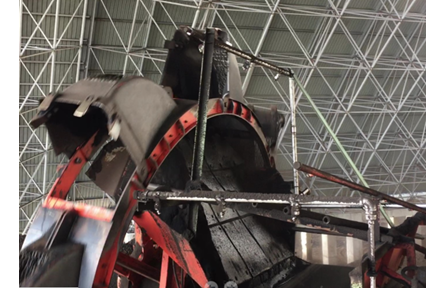
The goal was to bind the particulates with water and thus significantly reduce emissions. Only when the dust particles agglomerate with the water drops, they can be deposited. For the separation to be successful, the droplet size produced by the nozzles is a decisive parameter (source). If the droplets are too large, the dust particles flow around them. Droplets that are too small are carried away by the ambient air flow just like the dust, so no separation takes place. Thus, as a first step, suitable nozzle types were selected for the respective locations. The engineers relied on a calculation system that was already successfully used in similar plants as shown in our case study.
The coal plant process
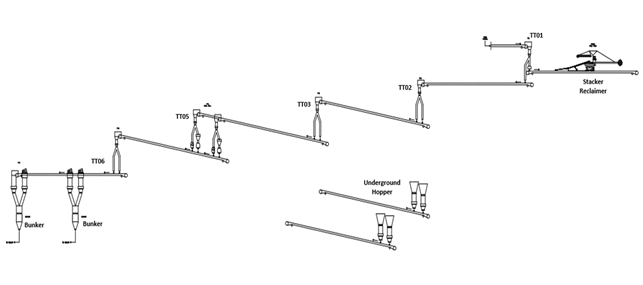
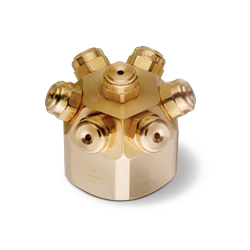
The hard coal for Sebalang is delivered by ship. From the final loading point it runs over 850 m conveyor belts into an underground bunker. On its way, the coal passes five transfer towers (Figure 2), is shredded and several times reloaded. These transfer points are particularly critical in terms of fine dust emissions. Hydraulic FogJet® 7G nozzles spray directly on the paddle wheel from above for optimal fine dust control. (Image 1a/b).
The dust control nozzle
The 7G full cone nozzles consist of a head with seven smaller nozzles. They produce a fine spray pattern and thus effectively prevent the spread of the raised dust. On the individual transfer towers (TT) hollow cone nozzles of type WhirlJet® BD were installed in a circle, which spray diagonally from above on the conveyor belts. The spray curtain suppresses the formation or spread of dust by particle binding. Lastly, bi-fluid nozzles were employed before the bunker hole. These atomize the water with compressed air and thus produce an extra fine droplet spectrum (d32 ≈ 30 µm (Operating at 3 barg atomization air pressure and 3 barg liquid pressure)). As a result, particularly fine dusts occurring at this point can be bonded very well. All lines to the nozzle systems have additionally been equipped with filter units. This extends maintenance intervals as well as the entire nozzle life (source).
The optimal positioning of all nozzle systems was simulated in CAD graphics (Computer-Aided Design). The last fine-tuning took place in cooperation with the local operator. Finally, dust formation could be significantly reduced thanks to the use of SSCo nozzle technology; a significant improvement for employees and the environment.
Thus, the emission values could be significantly improved using latest nozzle technology. If you’d like to learn more about dust control please contact us directly or download the brochure.
